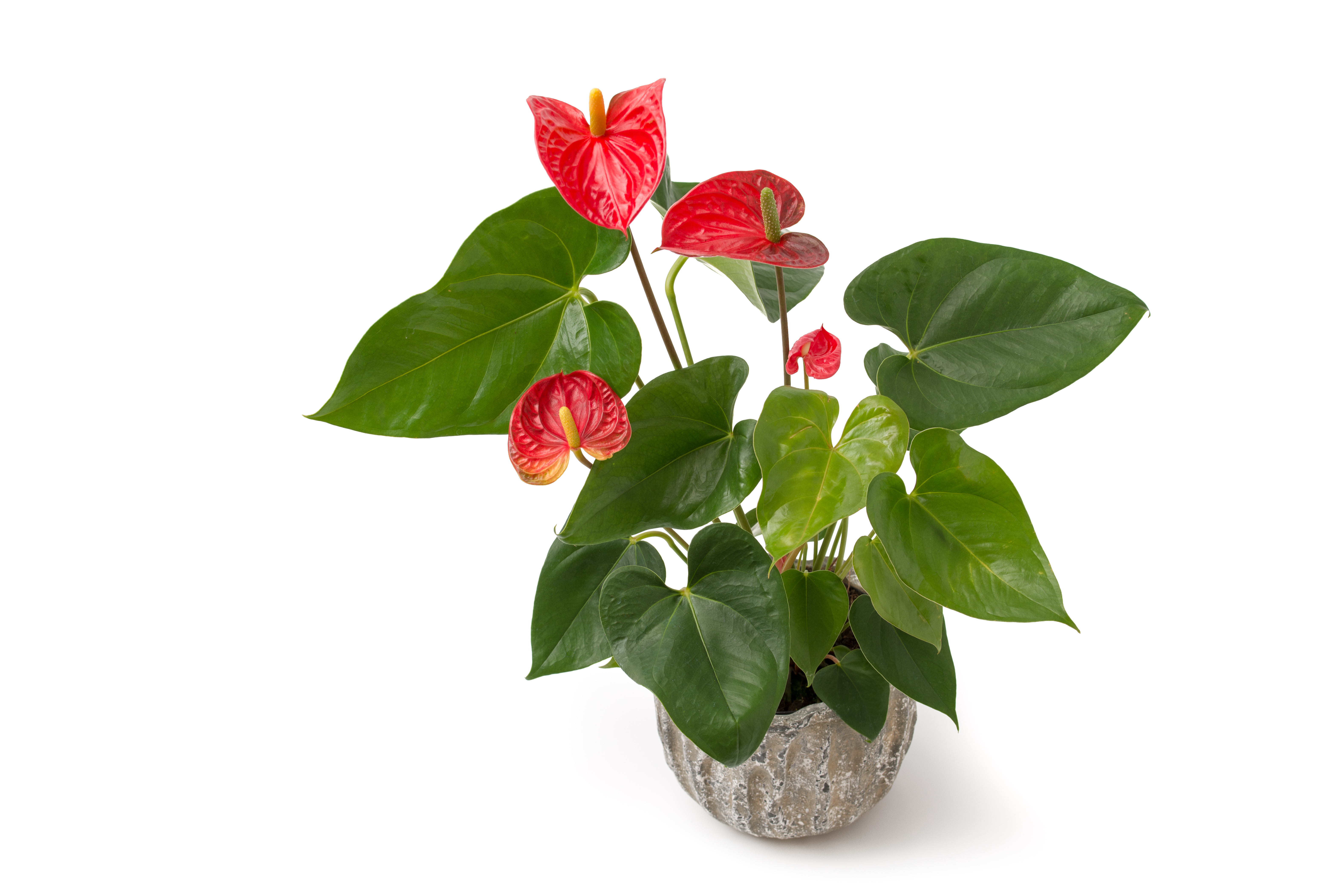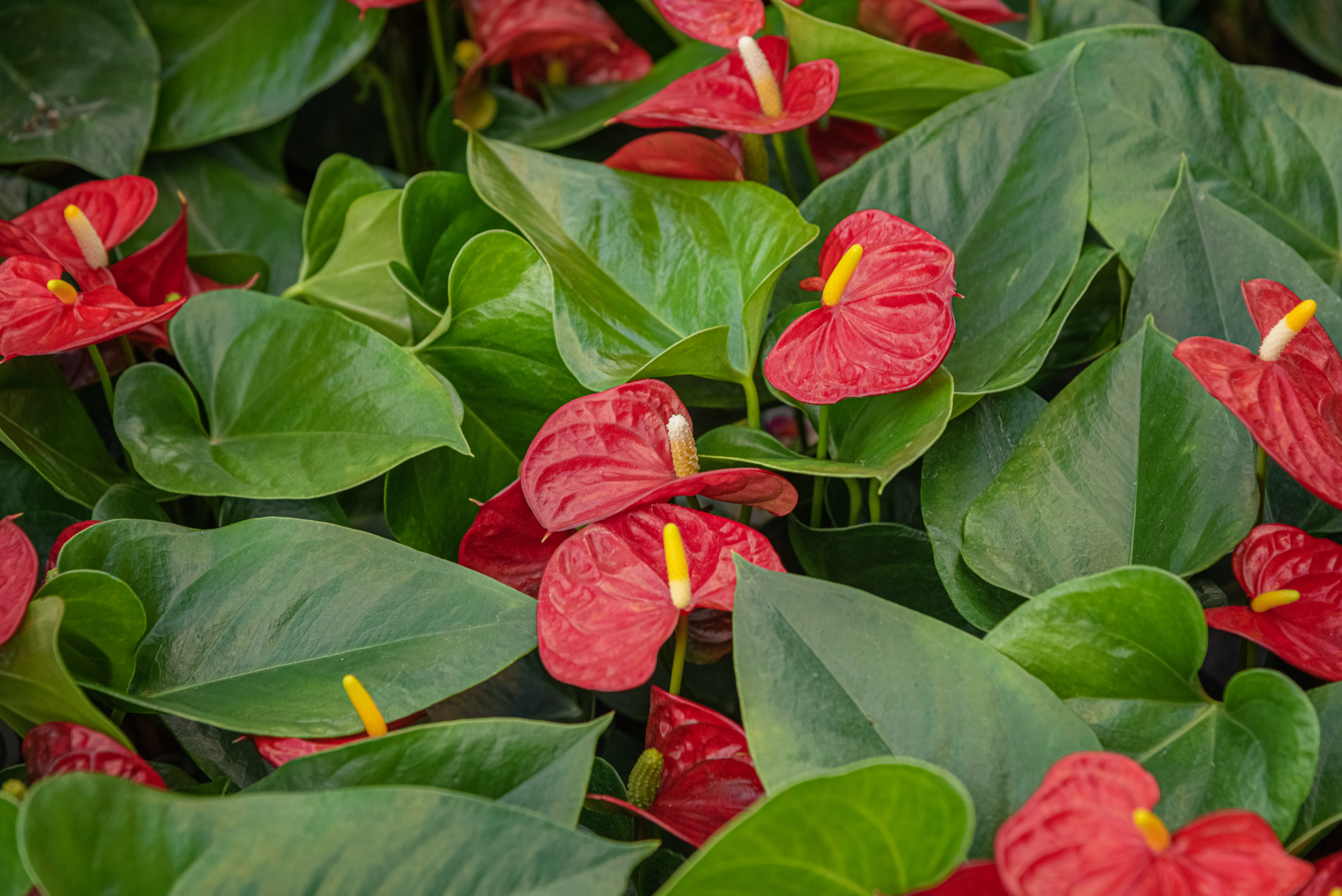Origin
Anthurium scherzerianum , commonly known as the Flamingo Flower, is a colorful eye-catching plant originally from the rainforests of South America as well as some parts of Central / North America.
They're also often referred to as a 'Painter's Palette', or simply as an 'Anthurium'.
The Flamingo Flower name comes from the bright pinkish-red coloring of their flowers. These are large, waxy heart-shaped spathes with yellow spadices reminiscent of the Peace Lily (they're from the same Family after all!)

Care
Can be a bit tricky to care for but with the right balance of water, light and love it can flower for a long time to come.
Flamingo Flowers are adapted to life in warm, humid jungle-like environments where they don't get that much direct sunlight, but do get plenty of moisture. They do like bright, indirect light, so do make sure that yours gets enough light, but note that too much harsh sun can scorch their leaves.
They also don't like the cold - the colder they are, the less likely they are to bloom, and overall growth rates will slow too. Ideally, try to keep yours at a consistent temperature of between around 77-86 ºF (25-30 ºC).
Perhaps most importantly to keep your Flamingo Flower happy, though, is to maintain high humidity around your plant! If your home isn't naturally humid (most indoor environments are too dry for tropical plants), then it's important to remember to mist your plant regularly. You can also boost humidity by setting up a pebble tray or, if you have multiple humidity-loving tropical plants, it could be worth investing in a humidifier.

Other
The blooms of Flamingo Flowers often appear so shiny and waxy that they're said to look like they are fake and made of plastic! Although they're usually pink or red, they can also come in shades of purple.
In the wild, the spadix, if pollinated, can develop into small fruits that resemble red berry clusters. However, note that all parts of this plant are unfortunately toxic to both humans and animals as they contain calcium oxalate crystals, so keep it out of the way of children and pets.
If your Flamingo Flower starts to lose its characteristic glossiness, this can be a sign of too low humidity. This plant loves moisture, so try to mist it regularly in order to help prevent its leaves from turning a more flat-looking dull green.